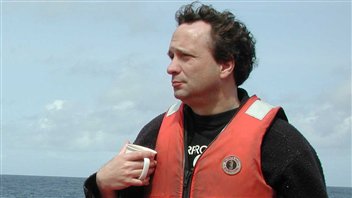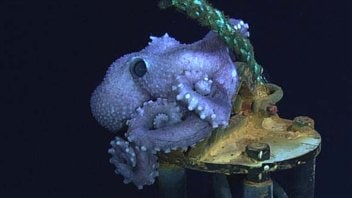It is a unique and groundbreaking experiment and research resource
On the ocean floor of the Pacific off the coast of Canada’s Vancouver Island, and now in the Arctic off Cambridge Bay, are large networks of scientific sensors. They’re all connected by fibre optic cables to land based computers allowing for a wide variety of ocean and marine life observations and data to be collected 24 hours a day, all year long.
Dr Kim Juniper, is Science Director of Ocean Networks Canada, and a Professor of oceanography at the University of Victoria, in British Columbia
Listen
John P. Tully in 2011, during an Ocean Networks Canada
expedition offshore of Vancouver Island.
© Dr. Verena Tunnicliffe (University of Victoria)
The systems are called NEPTUNE, (NorthEast Pacific Time-series Undersea Networked Experiments) an 800 kilometer loop in the Pacific, the smaller 50km VENUS system (Victoria Experimental Network Under the Sea) in the Salish Sea (focusing on stressed coastal waters, low-oxygen, fish migration, noise pollution, slope failure and sediment dynamics) and a newer and smaller but equally important Arctic observatory in Cambridge Bay.
These are operated under the auspices of Ocean Networks Canada at the University of Victoria, in British Columbia.
The idea, and need, for such systems came from the frustration of scientists who could only travel out into the ocean for a few weeks at a time to conduct research and then wondering what was happening the rest of the year. At the same time, such short term surface voyages were also extremely costly in a time of ever decreasing budgets.
The Canadian system is the first of its kind to enable continuous monitoring of ocean conditions and marine life activity. The Canadian system is being looked to as a model for other similar initiatives now being created elsewhere around the world
They are now in the process of developing sensors to withstand the rigours of the ocean depths to monitor acidification as oceans absorb more C02.

monitoring is available, but times are limited to avoid light
pollution © Oceans Network Canada
Online video of seafloor activity is available on the sites. although the lights are turned on only for short (scheduled) times to prevent light pollution







For reasons beyond our control, and for an undetermined period of time, our comment section is now closed. However, our social networks remain open to your contributions.